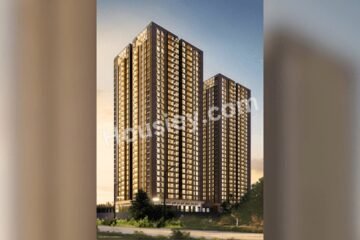In the fast-evolving world of Australian construction, meeting compliance isn’t just a box to tick — it’s central to safe, sustainable, and future-ready buildings. For engineers working on MEPF design (Mechanical, Electrical, Plumbing, and Fire Protection), staying aligned with relevant Australian construction standards ensures your project meets not only legal requirements but also the expectations of regulators, developers, and end-users.
In this blog, we break down the most critical construction standards Australian engineers should prioritise across every MEPF discipline — and how Decobu integrates them from day one.
Why Do Standards Matter in MEPF Engineering?
Standards aren’t just about minimum compliance — they set the benchmark for:
- ✅ Safety (for occupants, installers, and responders)
- ✅ Energy efficiency and sustainability outcomes
- ✅ System performance and operational reliability
- ✅ Regulatory approvals and legal liability
- ✅ Future-proofing buildings against evolving environmental and technological demands
By embedding the right standards early, engineering consultancy firms in Australia like Decobu help projects avoid costly redesigns, approval delays, or performance shortfalls.
Key Australian Construction Standards by MEPF Discipline
🔧 Mechanical (HVAC System Design)
- AS 1668.1 & AS 1668.2 — Ventilation for buildings
- AS/NZS 3666 — Air-handling and water systems (Legionella prevention)
- NCC Section J — Energy efficiency in HVAC systems
- Green Star/NABERS performance targets
💡 Why it matters: These standards guide air quality, temperature control, energy efficiency, and occupant health — core to energy efficient HVAC solutions.
⚡ Electrical
- AS/NZS 3000 — Wiring Rules (the ‘bible’ for electrical safety)
- AS/NZS 3013 — Fire-resistant wiring systems
- AS 3439/61439 — Switchboard design and testing
- AS/NZS 5033 — Solar PV installations (if applicable)
💡 Why it matters: These standards ensure safe, reliable power distribution, essential for modern electrical building services design and integration with smart building engineering.
💧 Hydraulic & Plumbing
- AS/NZS 3500 series — Plumbing and drainage (water supply, sanitary, stormwater, and fire services)
- AS 2419.1 — Fire hydrant systems
- WSAA Codes — Water Services Association of Australia standards (for water authority acceptance)
💡 Why it matters: Proper compliance helps hydraulic systems operate safely, efficiently, and in line with sustainable building services goals.
🔥 Fire Protection Engineering
- AS 2118 series — Automatic fire sprinkler systems
- AS 1670 — Fire detection, warning, and control systems
- AS/NZS 2293 — Emergency lighting and exit signs
- AS 4072.1 & AS 1530.4 — Passive fire protection solutions
💡 Why it matters: These are critical for occupant safety, emergency response, and insurance/legal compliance. Fire systems must also interface correctly with other MEP systems.
Overarching Regulatory Framework
- National Construction Code (NCC) — All MEPF design must align with the NCC, particularly:
- Volume One: for commercial/multistorey buildings
- Section F (Health), Section J (Energy), Section E (Fire safety)
- State-specific building regulations and development control plans (DCPs)
💡 Why it matters: The NCC ties together all the above standards into a single regulatory umbrella — non-compliance can mean denied occupancy certificates.
How Decobu Delivers Standard-Compliant MEPF Design
At Decobu, our building services engineering approach is proactive — not reactive. Here’s how we ensure compliance and optimisation go hand-in-hand:
- 🔍 Early design audits to match applicable standards across disciplines
- 🧠 Cross-functional team collaboration — mechanical, electrical, fire, and hydraulic working together
- 📐 BIM and digital design tools to model and validate systems in accordance with codes
- 📑 Continuous updates based on changes to AS/NZS standards and NCC volumes
- 🌿 Green building integration, ensuring standards also align with NABERS and Green Star targets
Whether you’re planning a commercial tower in Sydney or a healthcare facility in Perth, our knowledge of Australian construction standards ensures your MEPF systems meet today’s code — and tomorrow’s demands.
FAQs
What’s the most important construction code for MEPF design in Australia?
The National Construction Code (NCC) is the primary document that governs all MEPF design. It references relevant Australian Standards and dictates performance and compliance requirements.
❓ How often do Australian Standards change?
Major updates usually occur every 5–7 years, but minor amendments can happen sooner. Decobu continuously monitors for changes to ensure all designs meet the latest standards.
❓ Can non-compliant MEPF design be approved later during construction?
In some cases, yes — but it’s risky and costly. Retrofitting to meet fire, electrical, or hydraulic standards late in a project often causes delays, added cost, and rework. Early compliance is far more efficient.
❓ Do sustainable or smart building systems require different standards?
Not necessarily, but they often require additional standards — especially around energy performance (e.g., NCC Section J), automation integration, and fire interfacing. Smart and sustainable systems must still meet all baseline Australian Standards.
❓ How can developers ensure compliance without slowing down timelines?
By involving an experienced engineering consultancy in Australia like Decobu early. We ensure all MEPF services are coordinated and code-compliant from concept to construction.
Final Thoughts
Engineering excellence in Australia starts with code alignment. With the right expertise and proactive design, standards don’t hold you back — they future-proof your projects.
At Decobu, we go beyond compliance to deliver sustainable, smart, and standards-led MEPF design — tailored to the unique needs of your building, your users, and the Australian climate.





